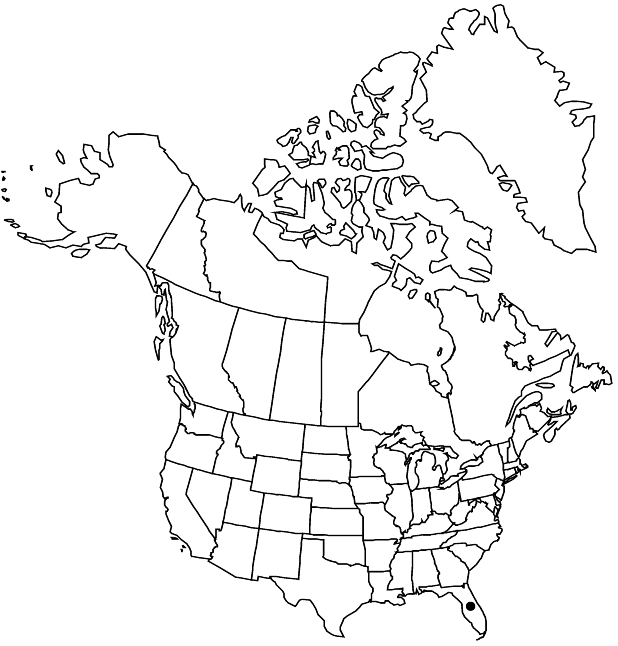Jacquinia keyensis
in I. Urban, Symb. Antill. 2: 444. 1901 ,.
Shrubs or trees to ca. 6 m; twigs gray, lepidote when young, glabrescent. Stems light gray, nearly smooth. Leaves alternate or indistinctly pseudoverticillate; petiole to 5 mm, puberulous-lepidote; blade 1–4.5 × 0.5–2.5 cm, coriaceous, margins slightly to strongly revolute, apex obtuse to rounded or retuse, mucronate. Racemes 4–30-flowered, to 6 cm, commonly exceeding leaves. Pedicels 7–12 mm; bracts lanceolate, 0.5–0.7 mm. Flowers: sepals 2–2.5(–4) mm, margins entire or erose; petals 6–9 mm, lobes ca. as long as or longer than tube; stamens shorter than staminodes; staminodes oblong, 3.5–4.5 × 2–3(–4) mm, apex obtuse, rounded, or truncate. Berries orange-red, 9–10 mm diam., pericarp smooth. Seeds brown, 3–5 mm.
Phenology: Flowering year-round.
Habitat: Coastal strands, on sand or exposed rocky ground
Elevation: 0-10 m
Distribution

Fla., West Indies (Bahamas, Cayman Islands, Cuba, Hispaniola, Jamaica).
Discussion
Jacquinia keyensis is localized in the coastal strand; it grows mostly on coral exposures within the salt-spray community of the Monroe County keys, and Miami-Dade and Lee counties. It is listed as threatened by the state of Florida.
The name Jacquinia armillaris Jacquin has been misapplied to Florida material of J. keyensis.
Selected References
None.
